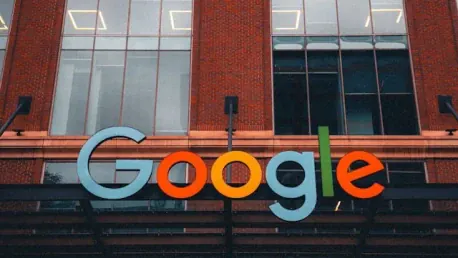The digital world is in constant flux, and email, a cornerstone of online communication, is no exception. Google is rolling out significant changes to Gmail in 2025, raising questions about the future of our trusty email addresses. Should we brace ourselves for a mass exodus from existing accounts? What exactly is changing, and how will it impact you?
This article delves into the heart of Google’s Gmail upgrade, exploring the reasons behind the shift, the potential consequences, and whether creating a new email address is the best course of action for you in 2025. We’ll examine the evolving landscape of email security, the rise of innovative alternatives, and the practical implications of these changes for everyday users.
1. The Winds of Change: Why Google is Revamping Gmail
Google’s primary motivation for this significant upgrade is to bolster email security. With cyber threats becoming increasingly sophisticated, traditional email systems are proving vulnerable. Phishing attacks, spam, and malware are becoming more prevalent, jeopardizing sensitive information. In addition to security enhancements, Google aims to streamline the user experience. The upgrade will likely introduce new features, improve existing functionalities, and potentially integrate with other Google services more seamlessly.
This combination of increased security and user convenience underscores Google’s commitment to providing a robust and reliable email platform. However, these changes may also bring about a fundamental shift in how users interact with their email accounts. The incorporation of AI for personalized experiences and automation hints at a more proactive approach to managing one’s inbox. As we navigate this evolving landscape, understanding the underlying motives behind these updates can help users anticipate and adapt to future developments.
2. Key Changes to Expect in 2025
While the specifics are still under wraps, several anticipated changes could significantly impact how we use Gmail. Enhanced security protocols are expected, including stricter authentication measures and improved spam filters to combat phishing and malware. The focus on privacy may lead Google to introduce features that give users more control over their data and privacy, ensuring that personal information remains protected. Integration with AI will likely bring about AI-powered features to personalize the user experience, automate tasks, and enhance email organization.
The improved user interface is also on the horizon, promising a refreshed design and better functionality to make Gmail more intuitive and user-friendly. With these enhancements, the daily management of emails could become more efficient and less time-consuming. Users can look forward to a smoother, more secure experience that caters to their evolving needs. As we approach 2025, staying informed about these pending changes will be crucial for users to maximize the benefits of the upgraded Gmail service.
3. The Big Question: Should You Switch to a New Email Address?
The short answer is: it depends. While the upgrade itself doesn’t necessitate a new address, several factors might make it a worthwhile consideration. Security concerns are a significant factor; if you’ve been a victim of phishing or spam attacks, starting fresh with a new address and robust security measures can reduce your risk. Another reason might be decluttering and organization; a new address offers a chance to declutter your inbox and implement better email management practices.
Furthermore, privacy considerations can influence your decision. If you’re concerned about data privacy, creating a new address with updated privacy settings can give you more control over your information. Finally, sometimes a new email address simply signifies a fresh start, free from the baggage of an old, cluttered inbox. Evaluating these factors will help you determine if making the switch aligns with your personal and professional needs, ensuring a more secure and organized email experience.
4. Alternatives to Consider
If you decide to make the switch, several compelling alternatives to Gmail exist. ProtonMail is known for its strong encryption and focus on privacy, making it an excellent choice for users who prioritize data security. Another privacy-focused provider, Tutanota, offers end-to-end encryption to ensure that all communications remain confidential. Zoho Mail is a comprehensive email suite with a range of productivity features, appealing to those who need a robust platform for their professional activities.
Fastmail presents a reliable and user-friendly option with a clean interface, catering to users who value simplicity and efficiency. Each of these alternatives brings unique strengths to the table, allowing users to choose the one that best fits their specific requirements. Whether you prioritize security, privacy, or productivity, exploring these options can help you find an email provider that meets your needs, ensuring seamless and secure communication.
5. My Personal Take on the Gmail Upgrade
As someone who uses Gmail for both personal and professional communication, I’m cautiously optimistic about the upgrade. I welcome enhanced security and privacy features. However, I also value the familiarity and convenience of my existing Gmail account. I’ve personally experienced the frustration of a compromised email address in the past. Regaining control and securing my account was a time-consuming ordeal, making me more aware of the importance of email security.
For now, I plan to wait and see how the upgrade unfolds. I’ll carefully evaluate the new features and security measures before deciding whether to switch to a new address. By adopting a wait-and-see approach, I can make an informed decision that balances security, convenience, and familiarity in my email usage. This measured response allows me to adapt to the changes without prematurely disrupting my email communication.
6. Making the Transition Smoothly
If you decide to create a new email address, here are some tips for a smooth transition. First, inform important contacts about your new address to ensure continued communication. Second, update your email address across all your online accounts, including social media, banking, and shopping sites. Third, set up email forwarding from your old account to your new one to avoid missing important messages. Fourth, back up crucial emails from your old account to ensure you don’t lose valuable information.
Taking these steps will help you manage the transition effectively, minimizing disruptions in your communication. By being proactive and organized, you can ensure that your new email address integrates seamlessly into your daily routine. This preparation will ensure that the switch enhances your email security and organization without causing unnecessary inconvenience.
7. The Future of Email
The digital world is always evolving, and email remains a pivotal part of online communication. Google is set to introduce major changes to Gmail in 2025, prompting questions about the future of our reliable email addresses. Should we expect a mass departure from current accounts? What are these changes, and how will they affect you?
This article dives deep into Google’s upcoming Gmail upgrade, discussing the motivations behind this shift, its potential ramifications, and whether creating a new email address in 2025 is a prudent move. We will explore the shifting landscape of email security, emerging innovative alternatives, and the practical effects these changes will have on everyday users.
As we navigate this transformation, it’s crucial to understand both the benefits and challenges. Email security advancements aim to better protect your information, while new features could enhance the user experience. Stay informed and prepared to make the best decision for your email needs in the ever-changing digital world.









